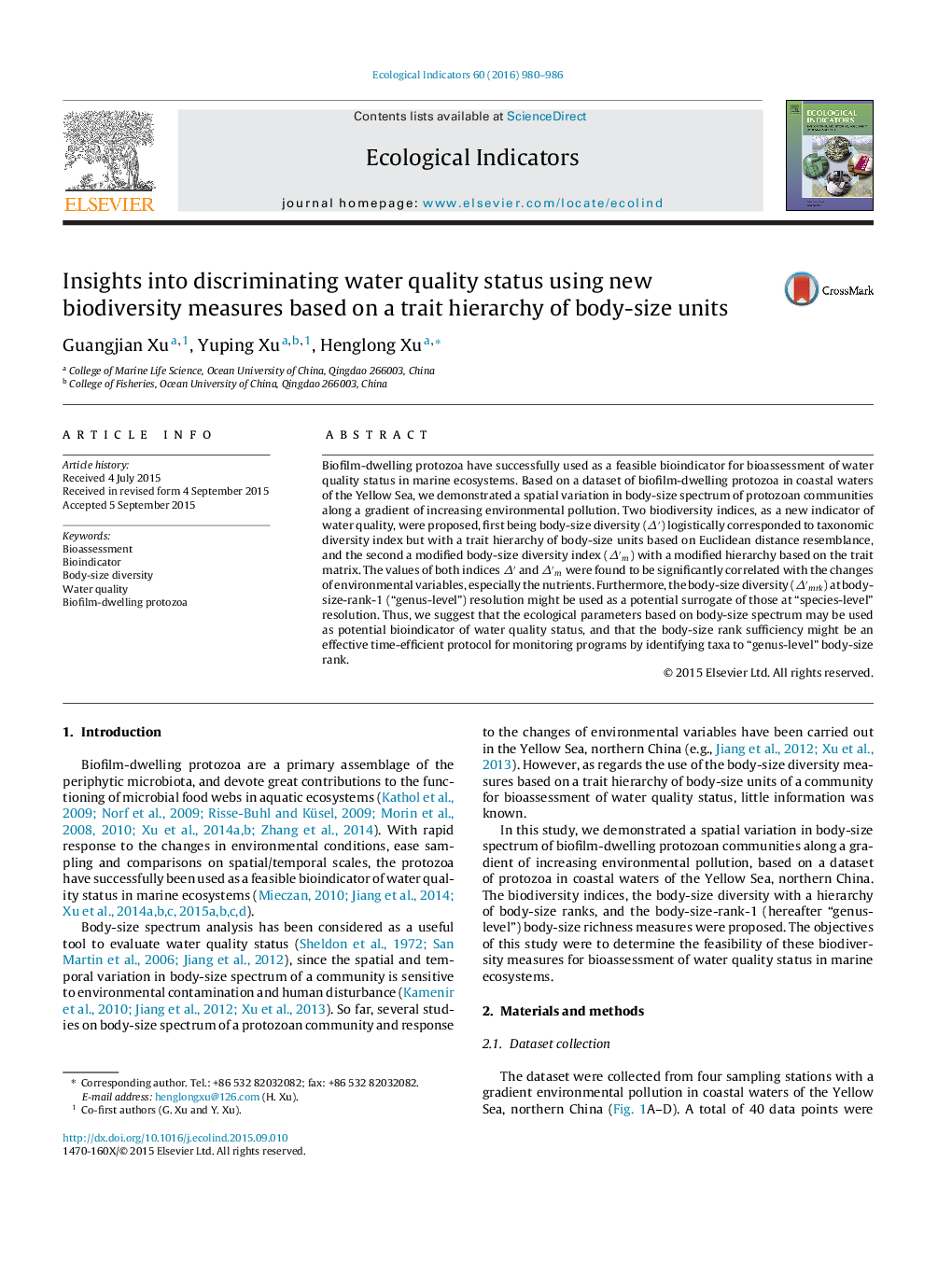| Article ID | Journal | Published Year | Pages | File Type |
|---|---|---|---|---|
| 6294208 | Ecological Indicators | 2016 | 7 Pages |
Abstract
Biofilm-dwelling protozoa have successfully used as a feasible bioindicator for bioassessment of water quality status in marine ecosystems. Based on a dataset of biofilm-dwelling protozoa in coastal waters of the Yellow Sea, we demonstrated a spatial variation in body-size spectrum of protozoan communities along a gradient of increasing environmental pollution. Two biodiversity indices, as a new indicator of water quality, were proposed, first being body-size diversity (Îâ²) logistically corresponded to taxonomic diversity index but with a trait hierarchy of body-size units based on Euclidean distance resemblance, and the second a modified body-size diversity index (Îâ²m) with a modified hierarchy based on the trait matrix. The values of both indices Îâ² and Îâ²m were found to be significantly correlated with the changes of environmental variables, especially the nutrients. Furthermore, the body-size diversity (Îâ²mrk) at body-size-rank-1 (“genus-level”) resolution might be used as a potential surrogate of those at “species-level” resolution. Thus, we suggest that the ecological parameters based on body-size spectrum may be used as potential bioindicator of water quality status, and that the body-size rank sufficiency might be an effective time-efficient protocol for monitoring programs by identifying taxa to “genus-level” body-size rank.
Related Topics
Life Sciences
Agricultural and Biological Sciences
Ecology, Evolution, Behavior and Systematics
Authors
Guangjian Xu, Yuping Xu, Henglong Xu,
